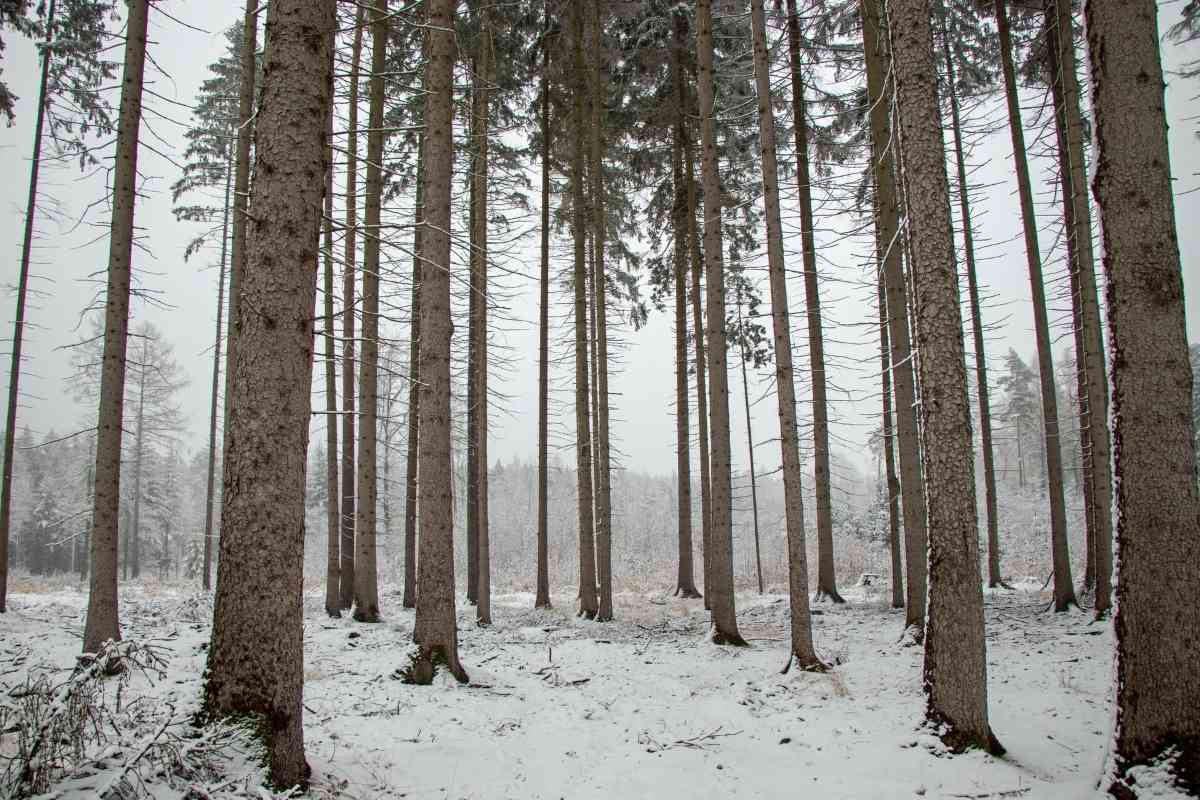Does It Snow In Germany? When And How Much?
Germany is a destination that can be visited any time of the year. With bustling old cities, breathtaking landscapes, and fascinating cultural attractions, there’s really no wrong time to visit the country. But when you think about the charming Christmas markets and world-class ski resorts, it’s easy to see why Germany is especially popular during the winter. If you’re planning a trip at this time, you’re probably wondering what type of weather to pack for. Will it be cold? Will there be rain? Is there a chance you’ll see snow? In this article, we’ll explain a bit more about the climate and what you can expect from Germany during the winter.

Does it Snow in Germany?
Many regions in Germany get snow during the winter. While snow is less common in the west and around the northern coast, it is almost guaranteed in the west and southern states of the country. This includes Berlin, Munich, and all of the mountains in the Bavarian Alps.
Germany is one of the largest countries in Europe, and the climate can vary depending on where you are in the country. The diverse landscapes of mountains and lakes also mean big differences in weather conditions, even in the same region or state.
Spring
Spring in Germany is a wild card. Some years it has been snowy through the end of March, while other years bring hot weather and lots of sunshine. But on average, you can expect temperatures to be anywhere from 40°F to 65°F.
If you’re seeking sun, your best chance is in the southwest near Rhine Valley. This area, which includes Frankfurt, Karlsruhe, and Freiburg, has the sunniest and warmest temperatures in Germany, especially in late spring and early summer.
Summer

Cities in south and western Germany have the highest temperatures, reaching an average of 85 to 90°F during the day.
However, the northwestern region of the country (Hamburg, Bremen) tends to be colder compared to the rest of Germany due to its proximity to the North Sea. It’s rare for the temperature to be higher than 75 to 80°F, even in the peak of summer.
Rain in summer is still common (especially in Bavaria), even if it’s just for a few hours each day. Although the days are still hot and sunny, you might see 5 to 10 days of rain each month.
Fall
Fall is one of the most beautiful times in Germany. In September, the days are still sunny but much milder compared to July and August.
However, things get progressively colder and less sunny as you make your way into November, which means snowfall is a possibility.
On average, you can expect September temperatures to be in the high 40s or low 50s. In November, the temperature can be in the low 30s or even colder if you’re in the south around Bavaria.
Winter
Winters in Germany are often cold and dark, with January having the lowest temperatures of the year. This is especially true in Bavaria, especially as you make your way closer to the Alps. Snow is almost guaranteed in Munich, although it’s the most common from November until March.
Although the cities of Hamburg and Bremen are far north, their distance from the sea means snow is relatively uncommon. However, you can expect harsh rain and wind despite the milder temperatures.
Where Does it Snow in Germany?

Unlike other places in the world, Germany actually gets more snow the further south you get. That’s because of the proximity to the Alps! Bavaria is the most southern state that encompasses a large part of the Alps (appropriately named the Bavarian Alps), which gets colder as the altitude climbs into the mountains.
That means you can expect to see several inches of snow in the region, including in the cities of Munich and Nuremberg.
However, southern Germany isn’t the only part of the country that sees snow. Berlin, Germany’s colorful and vibrant capital, also experiences snowfall in the winter. On average, Berlin sees around 27 days of snow each year.
That may not seem like much, but that’s far less than what it was in 1969 when there was a recorded 119 days of snow that year! Other cities in the northeast (Leipzig, Dresden) are also influenced by the cold air coming from the Baltic Sea, which affects the amount of snowfall in that region.
Snow is less common in the western part of the country, from the Rhine Valley up to the North Sea. This region is far milder in terms of weather compared to the rest of the country. The breeze from the Atlantic or the North Sea also keeps the snow and freezing temperatures at bay.
When Does it Snow in Germany?
German snowfall is unpredictable, as it can happen anytime throughout late fall, winter, or even early spring.
In November, the temperatures in Germany can drop to 35°F. In the Bavarian Alps, it can get as low as 15°F, which can signal the start of the snow season. But besides the mountains, snowfall is relatively rare in major cities or regions in the country.
December is the start of “real” winter, with all of Germany experiencing a cold freeze. Even if the weather is temperate during the day, it’s very likely that it dips below freezing at night. Snow in December is possible, especially considering the weather is anywhere from 30°F to 35°F.
The coldest month for most of Germany is January. Cities near the coast might not see snow, but Berlin, Munich, and much of the southern region will likely get snowfall at least once during this time.
But at this time, snow in the mountains is almost guaranteed. In fact, the Bavarian Alps see approximately 20-inches of snow just in January!

Where are the Ski Resorts in Germany?
Germans love their outdoor sports, and skiing is no exception. And with over 850 miles of slopes and 1,400 different chair lifts, you’ll be spoiled for choice when it comes to places to ski.
Spitzingsee is located near the Bavarian lake of Tegernsee and is one of the most popular resorts in Bavaria. It has several beginner-friendly trails as well as a few black runs for more experienced skiers or snowboarders.
You might have also heard of Garmish-Partenkirchen, a resort that hosted the 1936 Winter Olympic Games. It’s not far from Zugspitz (the tallest mountain in Germany) and can be reached in one hour from Munich or two hours from Innsbruck, Austria.
Oberstdorf is another popular destination for skiers and snowboarders. Covering seven different mountain peaks, you’ll have more than 80 miles of slopes to conquer. The main attraction here is Nebelhorn Mountain, which features an impressive view of more than 400 mountains from its summit.
As you can see, most of Germany’s ski resorts are located in the south. However, you can find a few smaller hills in the central and eastern states too.
Skigebiet Wildewiese in Sauerland, Skigebiet Willingen in Hessen, and Fictelberg in Saxony are just a few places to ski if you find yourself in the middle of the country.
So if you’re planning a trip to Germany, check the weather forecast. Depending on which region you’re visiting, you might be in for a white, snowy winter!
